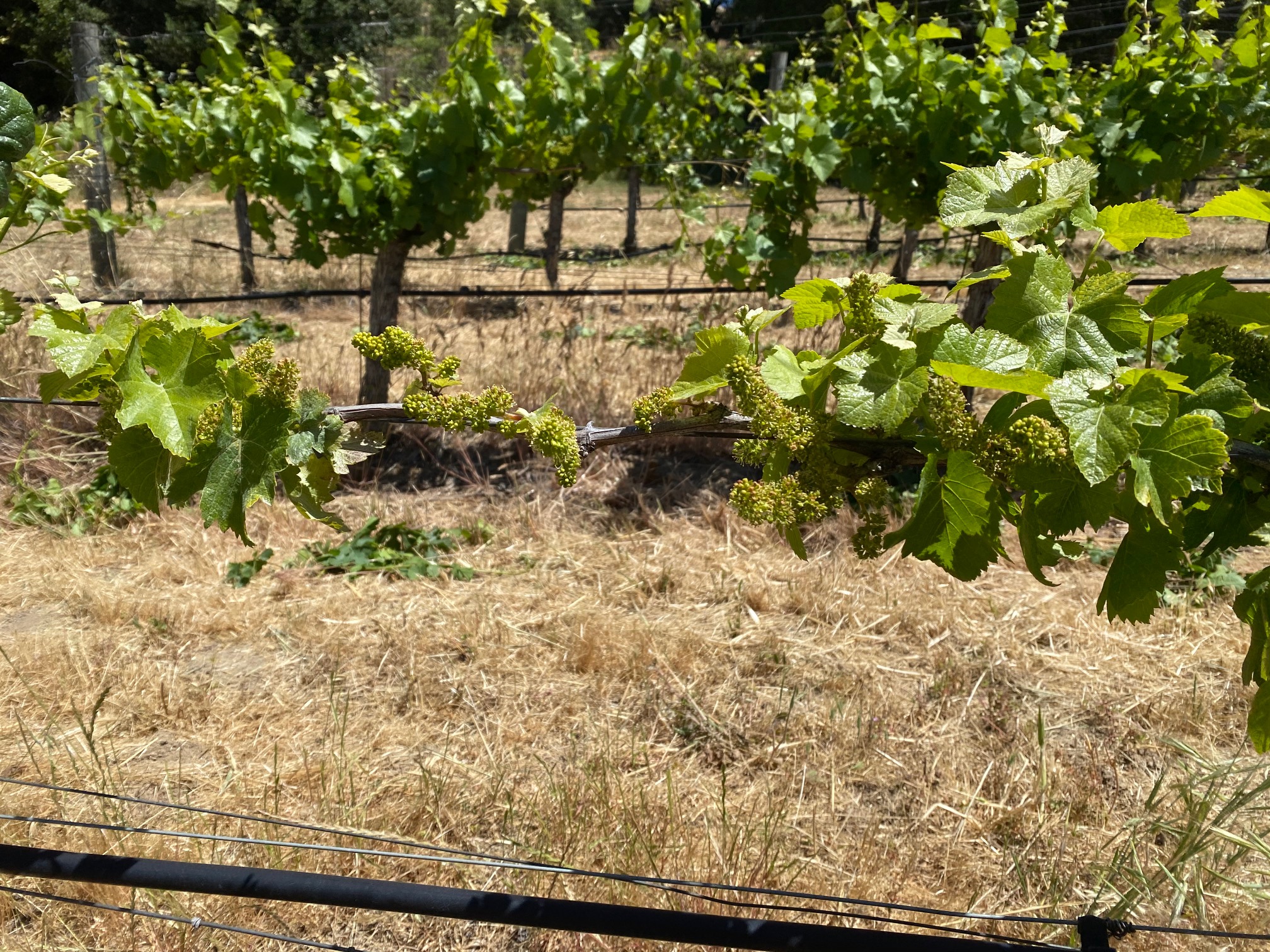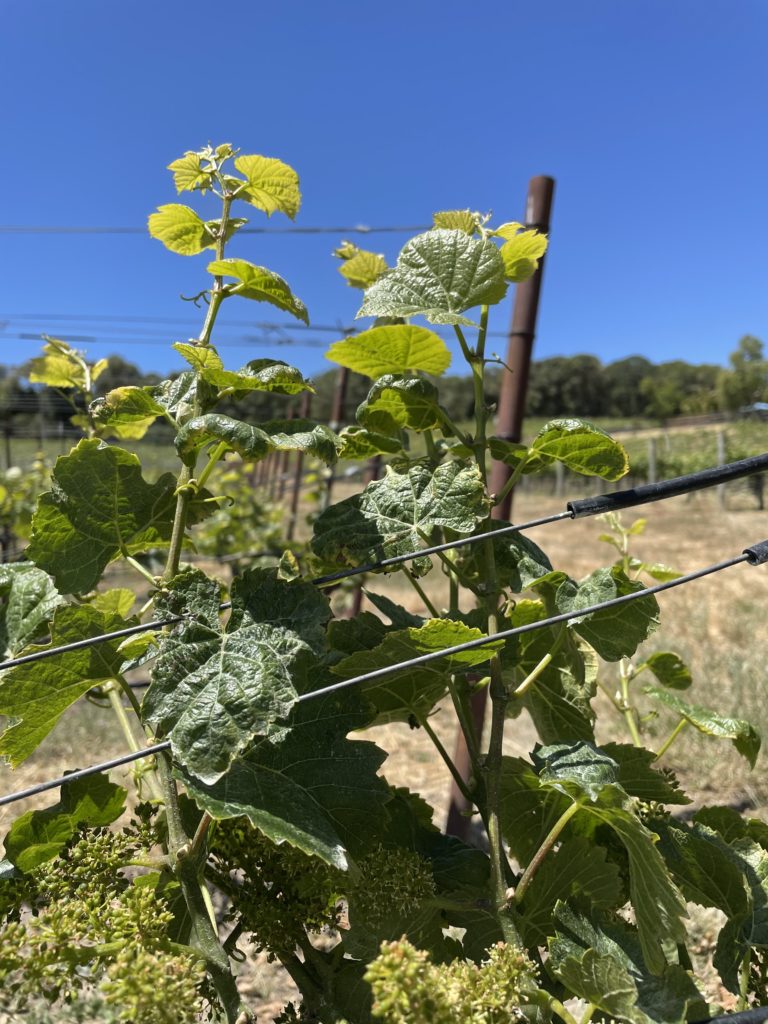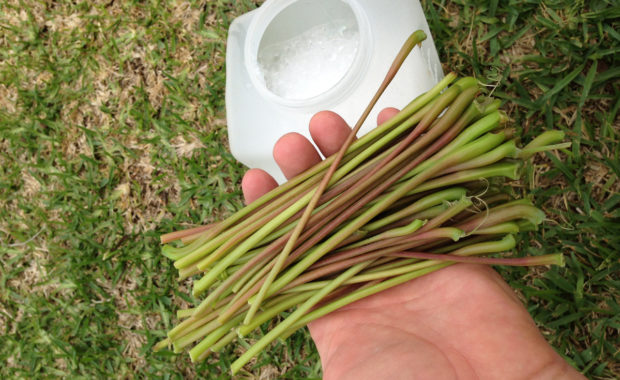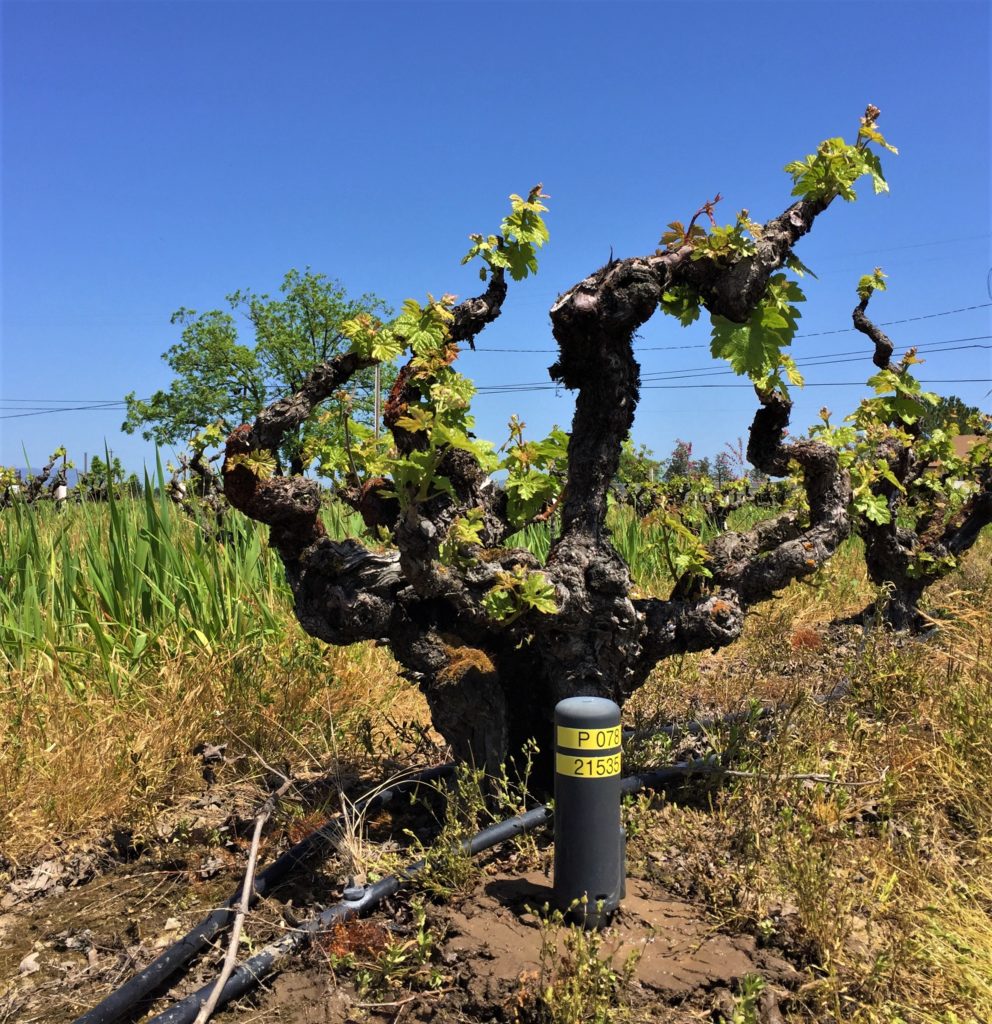Baby, it's dry outside
Here's what we've seen so far...
If you haven’t noticed, California is in a bit of a dry spot right now. Here in Windsor, middle of Sonoma County, this winter yielded a whopping 9.7 inches and the vintage is showing it in some surprising ways. We’ve written about the impending drought and what it means here and here. Now that we’re well into the growing season, let’s look at some of the things we’re seeing we didn’t expect.
Uneven growth…uneven flowering…uneven set
We expected to see some stunting and uneven growth. Last year was dry as well (although not this dry) and we saw some inconsistent shoot emergence and development. Things evened out as the season went on. This year however we’ve noticed this inconsistency continue into flowering and set. Walking through multiple vineyards Sonoma-county over we’ve seen clusters that are still in flower and others that are well past set. These berries are going to mature and ripen at different rates going forward. This could be detrimental to wine quality, so cluster thinning will be important at lag phase and at veraison to even up the maturation level.

Nutritional deficiencies
Nutrients get taken up by the plant via water. Limited water means limited nutrient uptake and this is definitely something we’ve seen in multiple sites. Most nutrient cycling occurs in the top 18 inches of soil. In a year lacking rainfall, the top of the profile is left fairly dry compared to the rest of the soil. Grapevine roots can go deep to search for water, but even if you have a well-developed root system that mines water, most nutrients aren’t down there.
We haven’t seen a lot of Potassium deficiencies, oddly enough. Potassium is taken up via mass flow of the soil solution. If most of the water is taken up below 18”, we would expect to see more K deficiencies. It’s weird that we haven’t.
We have seen Nitrogen deficiencies, which is definitely partly responsible for limited vegetative growth.
Repeated small applications of water have been shown to remedy nutritional deficiencies in part. This is because it keeps the roots active in the shallow soil, where these nutrients hang out.
Increased incidence of toxicity
We typically see a bit of Boron toxicity in some parts of the region. Boron, while a key micronutrient, becomes toxic at concentrations above 1 ppm in the soil solution. Our theory is that less water means that what may have been a tolerable concentration is now reaching a toxic level. This year, we’re seeing worse symptoms in sites where we’ve typically seen boron toxicity in years past. We’re also seeing Boron toxicity in vineyards where we’ve never seen toxicity before.
The only way to get rid of Boron is to leach it with rainfall. That clearly didn’t happen this winter, so if you have Boron problems, they’re only going to get worse this season.

What can I do about it?
You should be taking tissue samples regardless, but this year especially you’ll want to know what nutrients are adequate in your plant, what’s not, and what’s in excess. We tend to prefer petioles over leaf blades, taken at bloom and at veraison. You also may want to consider using more foliar fertilizer, as it doesn’t depend on water content in the soil.
Ready for this one? You sure? You’re going to want to monitor soil moisture. Boom! I feel like we’ve ridden this horse to death, but it’s surprising how many people don’t invest in soil probes. Above ground water ET measuring devices and plant stress measurements are great. In a drought though, you’re going to want to know how much water is left in the soil and when it’s running out. Even with the lack of rainfall, many places we work with still don’t need to irrigate at this point in the season. Even if you have no fear of running out of water this year, we may be in the doldrums of drought for the long haul.

What if my water’s getting cut off?
Do not give you plants a bunch of huge drinks in anticipation of not having access to water later. This will grow a big canopy that you can’t sustain later in the season when it’s drier and you have no water. Stick with smaller applications to encourage nutrient uptake.
…Oh and get yourself a soil probe.

Main photo: The Enterprise Bridge crosses over a section of Lake Oroville in Oroville, California (credit: Justin Sullivan/Getty)

